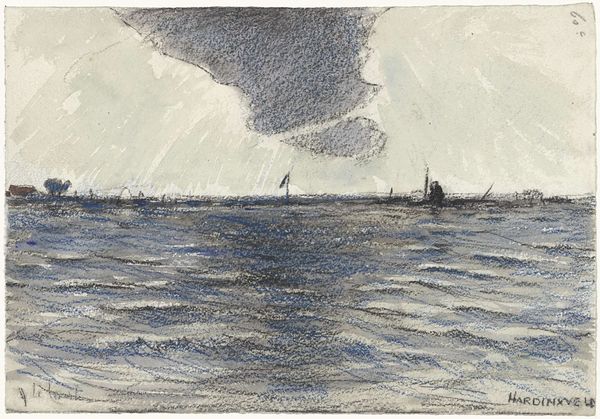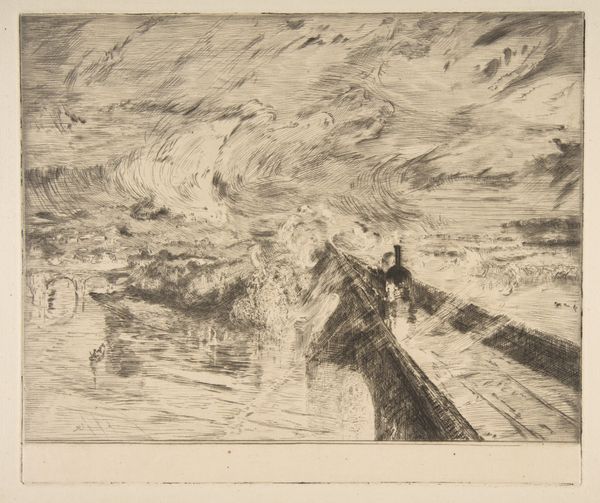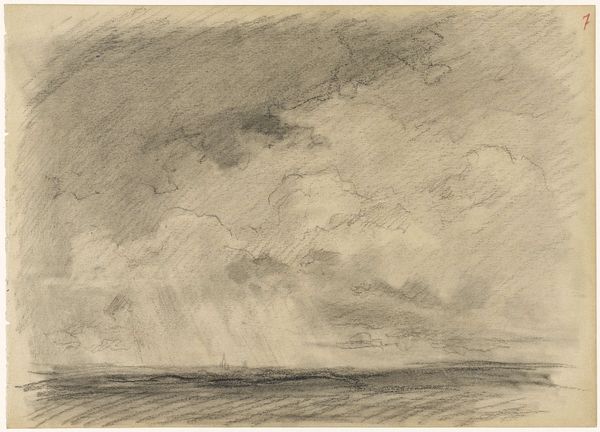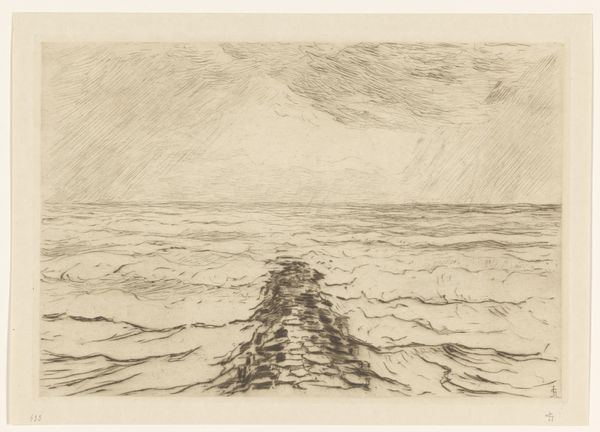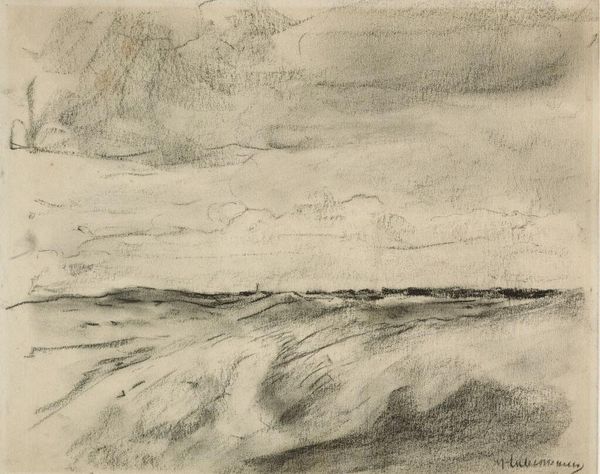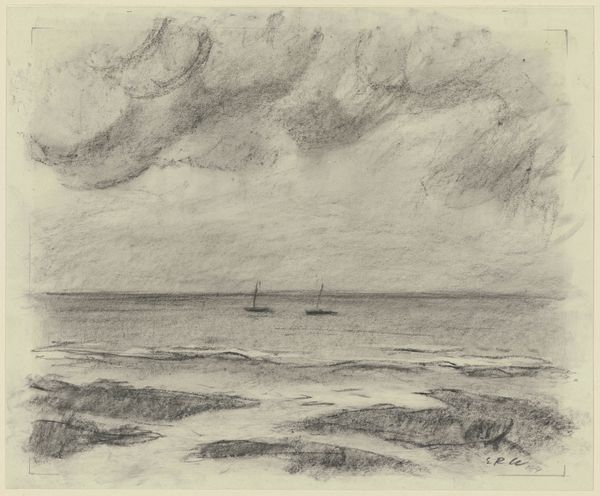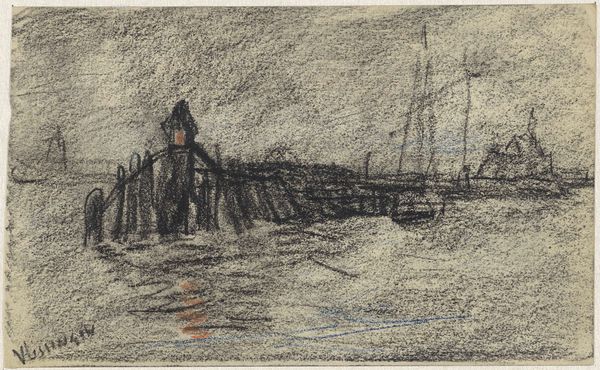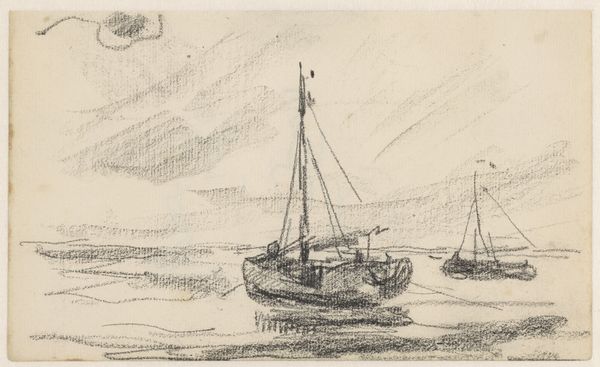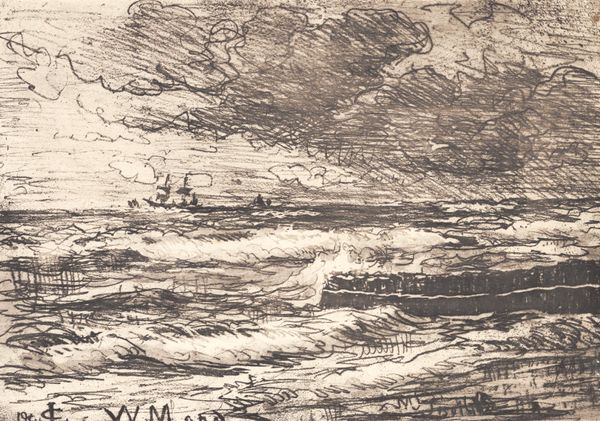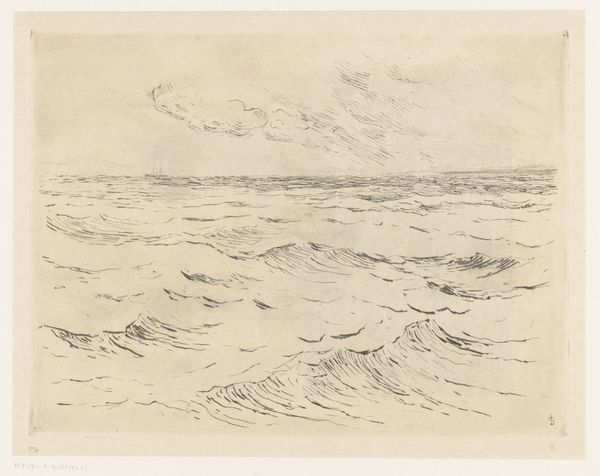
Dimensions: 177 mm (height) x 245 mm (width) (plademaal), 162 mm (height) x 230 mm (width) (billedmaal)
Editor: Here we have Carl Locher’s “Storm ved Tisvilde,” created in 1903. It's a print using etching and watercolor techniques. The churning sea and dark, swirling clouds definitely evoke a sense of drama. What do you see in this piece? Curator: The dominance of line is striking, wouldn’t you agree? Look how Locher uses densely packed, agitated lines to render the turbulent sea and the ominous sky. This deliberate use of line isn’t just descriptive; it is, in itself, an expressive element. The diagonal orientation in which he renders the waves further accentuates their energy and movement across the horizontal plane of the composition. What are your thoughts regarding his implementation of tonal variation? Editor: It’s interesting, how he uses so few colors. The limited palette seems to amplify the stark contrast between the sky and water, enhancing the overall intensity of the scene. What impact does this stark chromatic constraint impose on the viewer? Curator: Precisely! By restricting his palette, Locher forces us to focus on the fundamental elements of form and composition. The monochromatic approach amplifies the textural variations achieved through etching and watercolor washes, making the materiality of the artwork an important part of its message. Do you observe any correlation between Locher's formal techniques and the inherent subject matter of the tempestuous sea? Editor: Yes, the roughness of the lines mirrors the wildness of the storm, right? I can see how the form emphasizes the subject. It almost feels like the medium is mimicking the message! Curator: Exactly. The dynamism achieved through Locher’s formal decisions echoes the inherent volatility and chaos of a storm at sea. His formal manipulations heighten the sensory impact. A harmonious intersection of form and subject, wouldn’t you concede? Editor: Absolutely. Seeing the connection between the technique and the subject makes it much more compelling. Curator: Indeed, focusing on formal aspects provides powerful interpretive possibilities.
Comments
No comments
Be the first to comment and join the conversation on the ultimate creative platform.
